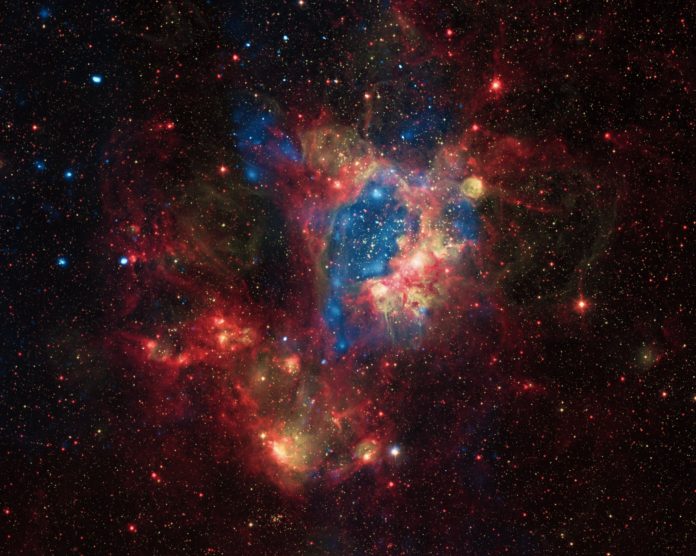Scientists are all set to launch NASA’s James Webb Telescope in a project that will study previously observed sections of the sky in an attempt to understand the formation of our universe better. Sections of the Hubble Ultra-Deep Field (HUDF) and the Great Observatories Origins Deep Survey (GOODS) are where the scientists will be focusing their attention during the project. In order to get a clear image as possible, the scientists will use Webb’s mid-infrared instrument (MIRI) to study HUDF and Webb’s near-infrared camera (NIRCam) to capture a section of GOODS.
“By mixing [the data from] these instruments, we’ll get information about the current star formation rate, but we’ll also get information about the star formation history,” said Hans Ulrik Norgaard-Nielsen, principal investigator for the proposed observations, and an astronomer at the Danish Space Research Institute, Denmark. About 10,000 galaxies can be seen in just a tiny section of the sky in the HUDF image, but they are extremely faint, making them some of the oldest, most visible galaxies in the universe.
Pablo Perez-Gonzalez is one of the co-investigators on the proposed observation, and an astrophysics professor at the Complutense University of Madrid, Spain. He confirmed that Webb’s powerful spectrographic instruments would allow scientists to gain a deeper understanding of the initial phases of the formation of supermassive black holes among other things.
With the MIRI being able to observe in an infrared wavelength of between 5 and 28 microns, the researchers aim to look at HUDF in 5.6 microns. According to Perez-Gonzalez the area of HUDF that they’ll observe will be around that of 4,000 galaxies. He also advised that with thanks to Webb, they “will detect around 2,000 to 2,500 galaxies, but in a completely different spectral band, so many galaxies will be quite different from the ones that [Hubble] detected.”
Using the NIRCam, the team will study a region of GOODS that are located near the section of HUDF that they’ve observed. “These NIRCam images will be taken in three bands, and they will be the deepest obtained by any guaranteed time observation team,” said Perez-Gonzalez. NIRCam has the ability to observe in infrared wavelength in the range of 0.6 to 5 microns, and as explained by Perez-Gonzalez, the researchers will use it to observe a section of GOODS.
More News to Read
- Engineers Develop World’s Most Functional and Flexible Transistor
- Smart Medical Tattoos That Change Color When a Problem is Detected
- Is There a Way for Type 1 Diabetes Sufferers to Ditch the Needle?
- Fast Radio Bursts Demystified With the Help of IceCube Neutrino Detector
- The Ultimate Form of Selfie is Here and it’s is in 3D

